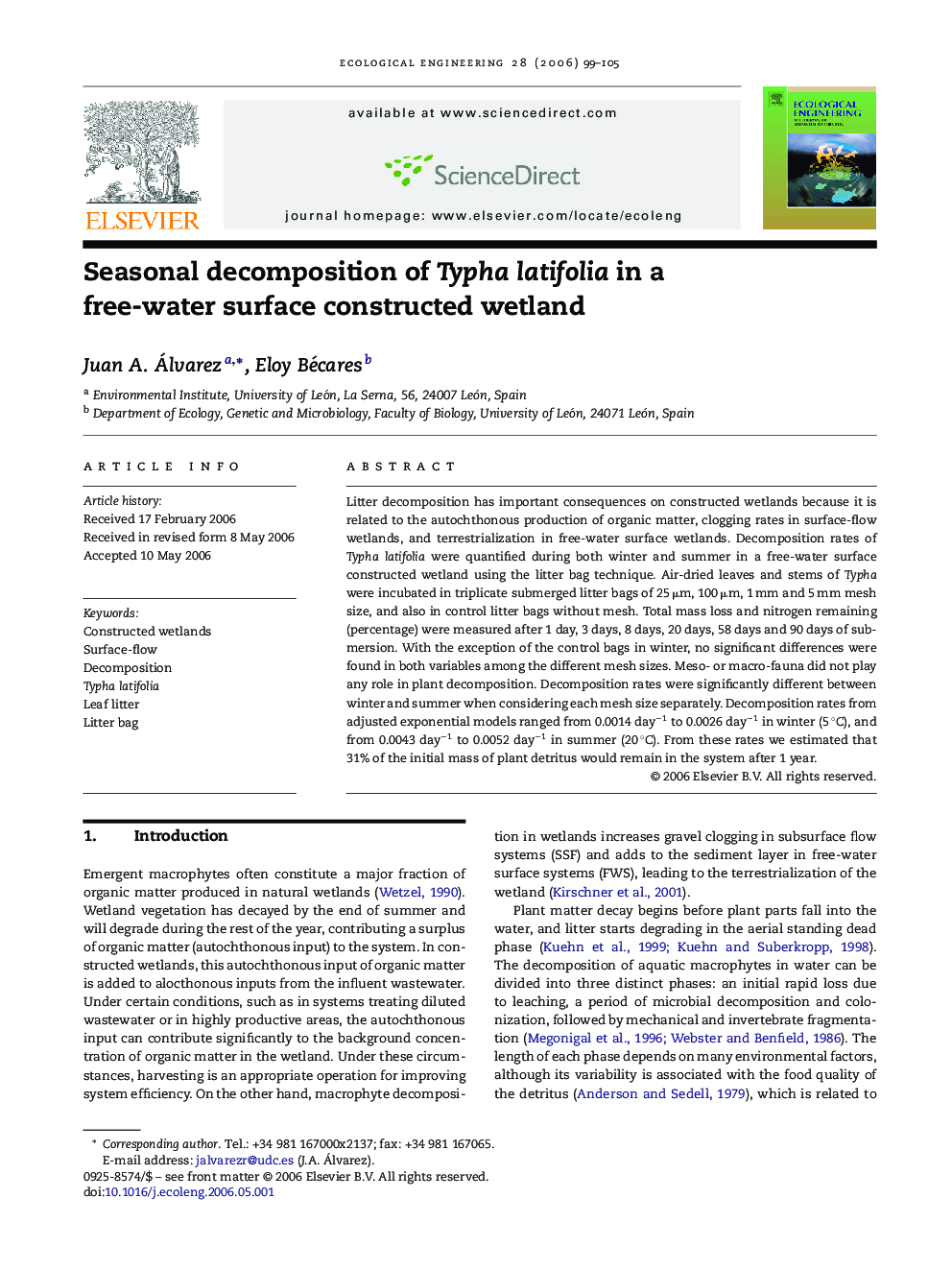| Article ID | Journal | Published Year | Pages | File Type |
|---|---|---|---|---|
| 4391217 | Ecological Engineering | 2006 | 7 Pages |
Litter decomposition has important consequences on constructed wetlands because it is related to the autochthonous production of organic matter, clogging rates in surface-flow wetlands, and terrestrialization in free-water surface wetlands. Decomposition rates of Typha latifolia were quantified during both winter and summer in a free-water surface constructed wetland using the litter bag technique. Air-dried leaves and stems of Typha were incubated in triplicate submerged litter bags of 25 μm, 100 μm, 1 mm and 5 mm mesh size, and also in control litter bags without mesh. Total mass loss and nitrogen remaining (percentage) were measured after 1 day, 3 days, 8 days, 20 days, 58 days and 90 days of submersion. With the exception of the control bags in winter, no significant differences were found in both variables among the different mesh sizes. Meso- or macro-fauna did not play any role in plant decomposition. Decomposition rates were significantly different between winter and summer when considering each mesh size separately. Decomposition rates from adjusted exponential models ranged from 0.0014 day−1 to 0.0026 day−1 in winter (5 °C), and from 0.0043 day−1 to 0.0052 day−1 in summer (20 °C). From these rates we estimated that 31% of the initial mass of plant detritus would remain in the system after 1 year.
